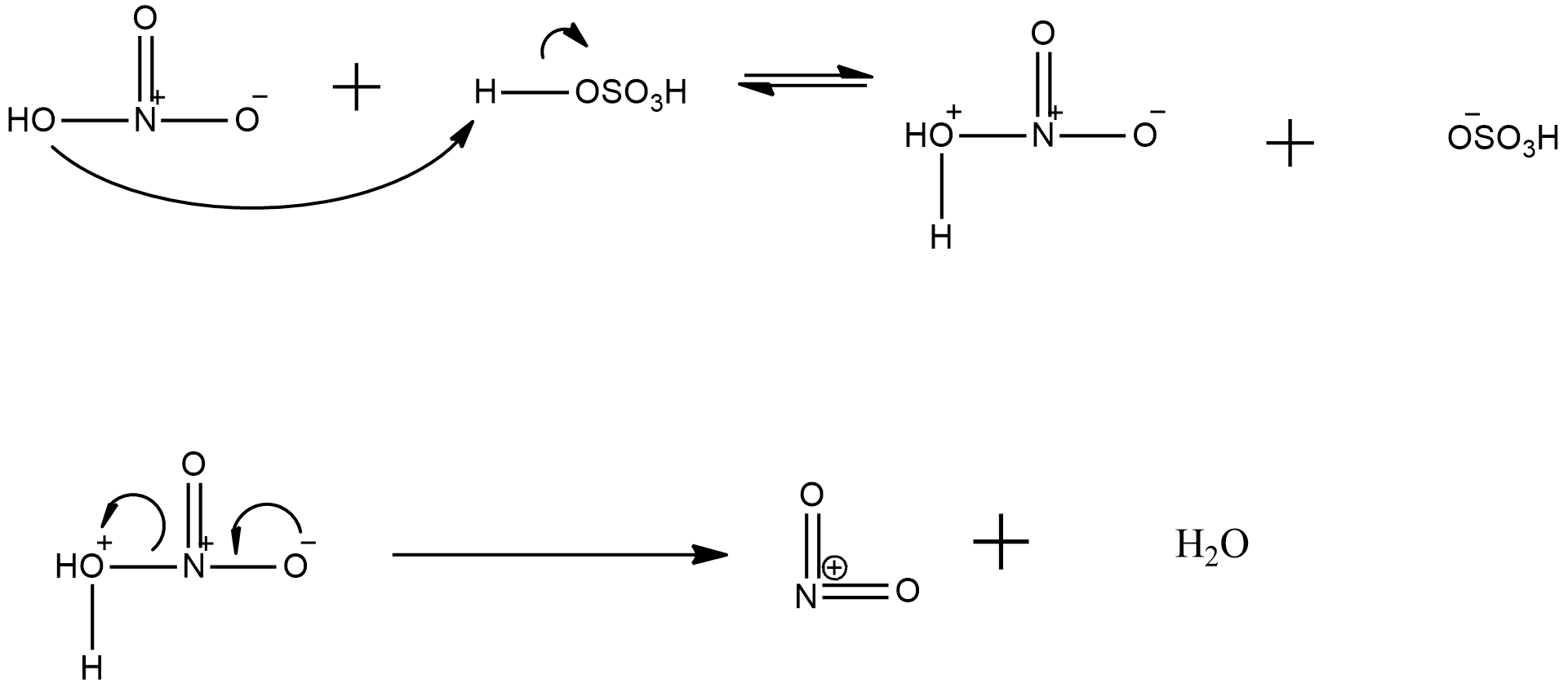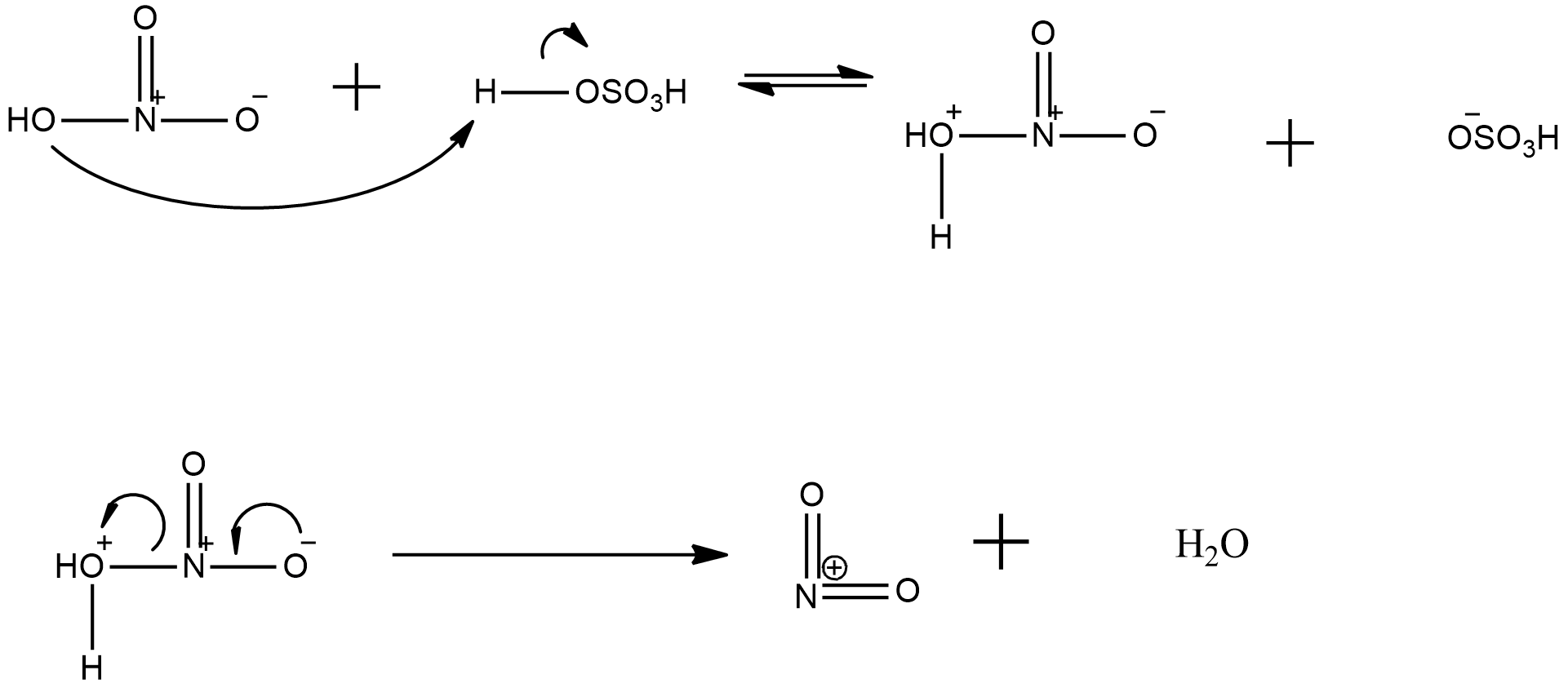
How is Nitronium ion formed from a nitrating mixture?
Answer
413.1k+ views
Hint: Formation of nitronium ions can be easily tracked when we look at the mechanism of nitration reaction’s mechanism. Also, we should know what a nitrating mixture is and what are the chemical compounds that form the nitrating mixture. Those compounds are nitric acid and sulphuric acid.
Complete answer:
The formation of nitronium takes place in many reactions which have nitrating mixture present in them. Nitrating mixture is a combination of concentrated sulphuric acid and nitric acid
Nitronium ion is a cation with the molecular formula

now, about the explanation of generation of nitronium ion from the nitrating mixture is given with the help the following mechanism:


Hence, it can be seen clearly that in nitronium ion formation needs a proton donor, such as sulphuric acid and then there is release of a water molecule and the nitronium ion is formed.
Note:
In the nitronium ion formation, although we need sulphuric acid in the start, but eventually as the reaction continues, the anion of sulphuric acid that is formed in the start, it again gains the proton from the further products that are formed in the reaction and converts back to sulphuric acid. Common example where we use nitronium ion is conversion of benzene to nitrobenzene.
Complete answer:
The formation of nitronium takes place in many reactions which have nitrating mixture present in them. Nitrating mixture is a combination of concentrated sulphuric acid and nitric acid
Nitronium ion is a cation with the molecular formula

now, about the explanation of generation of nitronium ion from the nitrating mixture is given with the help the following mechanism:


Hence, it can be seen clearly that in nitronium ion formation needs a proton donor, such as sulphuric acid and then there is release of a water molecule and the nitronium ion is formed.
Note:
In the nitronium ion formation, although we need sulphuric acid in the start, but eventually as the reaction continues, the anion of sulphuric acid that is formed in the start, it again gains the proton from the further products that are formed in the reaction and converts back to sulphuric acid. Common example where we use nitronium ion is conversion of benzene to nitrobenzene.
Latest Vedantu courses for you
Grade 11 Science PCM | CBSE | SCHOOL | English
CBSE (2025-26)
School Full course for CBSE students
₹41,848 per year
Recently Updated Pages
Master Class 9 General Knowledge: Engaging Questions & Answers for Success

Master Class 9 English: Engaging Questions & Answers for Success

Master Class 9 Science: Engaging Questions & Answers for Success

Master Class 9 Social Science: Engaging Questions & Answers for Success

Master Class 9 Maths: Engaging Questions & Answers for Success

Class 9 Question and Answer - Your Ultimate Solutions Guide

Trending doubts
Give 10 examples of unisexual and bisexual flowers

Draw a labelled sketch of the human eye class 12 physics CBSE

Differentiate between homogeneous and heterogeneous class 12 chemistry CBSE

Differentiate between insitu conservation and exsitu class 12 biology CBSE

What are the major means of transport Explain each class 12 social science CBSE

Why is the cell called the structural and functional class 12 biology CBSE




